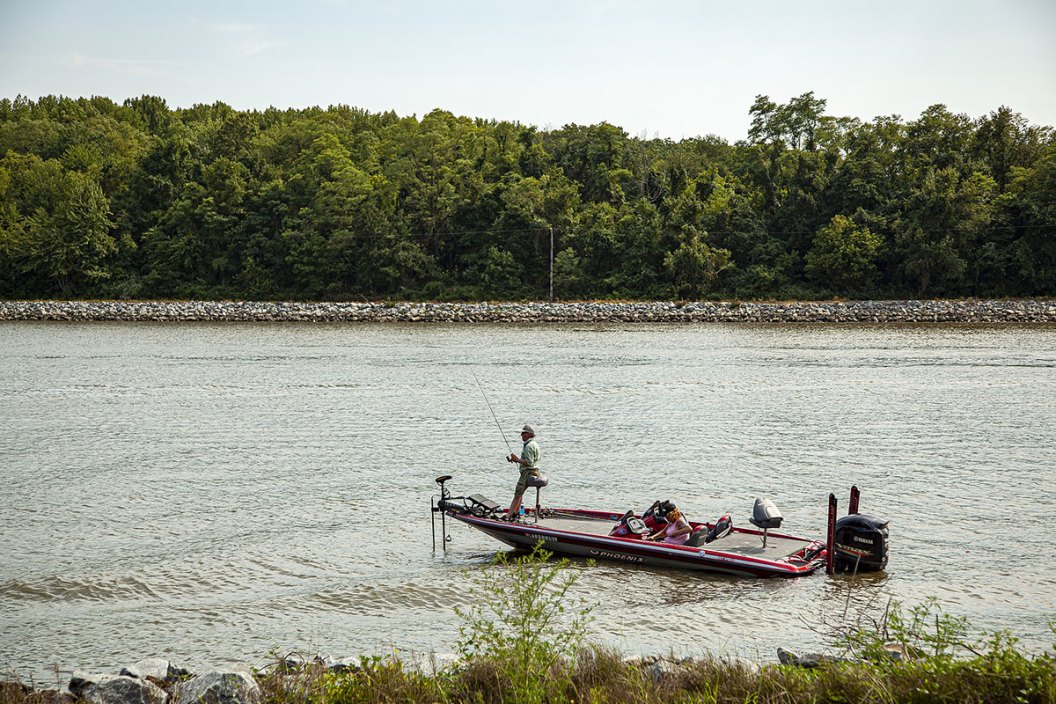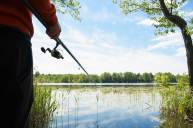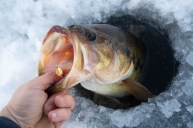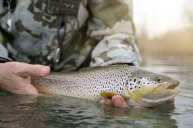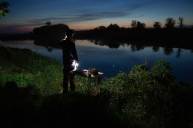Depending on where you live and what time of the year it is, these factors are what create the best fishing times.
When is the best time to fish?
Many claim that tides, moon phases, sunrise and fall, and even the way that you "hold your mouth" can affect fish activity and catch rate. It also behooves the fisherman to pay attention to the barometer and the solunar tables to see the best chance at success.
But there is no can't-miss calendar that precisely explains the best and worst times to go fishing. There are a lot of factors involved, and they're often different in varying locations.
The bottom line is that fishermen have known for a millennia that, even though the fish are there, they don't always cooperate like we want them to. For some of us, we're still trying to figure out why.
We may never know, but we won't stop trying because we love to go fishing, catch fish, and eat fish.
The Solunar Theory
According to the Solunar Theory, "In 1926 John Alden Knight postulated some folk lore he picked up in Florida and proceeded to attempt a refinement, giving it the name Solunar (Sol for sun and Lunar for moon)."
Knight spent his time compiling a list which ultimately combined 33 factors that seemed to influence or control the daily behavior of fresh and saltwater fish. While most of the 33 were eventually rejected, the three that remained were the one's that we still obvious go by: the sun, the moon, and the tides.
We know now that without the moon, there can be no tides, but can the moon cause a tide on a stream or a river? As saltwater fishermen know, the tides really do matter when it comes to the right time to fish so when the original research was being done, only the approximate times of moonrise and moonset were considered.
Now we know that there are two different periods of moon activity, the more evident major period (rise and set) and the minor periods, which are the midway points between the two major periods.
Knight first published these tables back in 1936 and its fishing history began. The tables are based on geographic location, time zone, adjusted for daylight savings time where necessary, and rounded to the nearest 10 minutes. The "periods," as Knight projected, would be the best times to catch actively feeding fish.
Based on this, Knight attempted to acquire complete details surrounding the capture of both individual large fish and high number catches.
His findings: 90 percent were made when the effects of the periods appear to be greatest, and as he found, they were made during the periods of the solunar tables, when a new or full moon provided the strongest influence on each month.
June, halfway into the year and at the beginning of summer, always has the most combined sun-moon influence. So what does this mean for fishing?
"When a period falls within 30 minutes to an hour of sunrise or sunset you can anticipate great action! When you have a moonrise or moonset during that period the action will be even greater. And, finally, when the above times occur during a new or full moon, you can expect the best action of the season!"
That equates to some minor mathematics and basic cross referencing. The best times to fish are when these factors align in just the right way. And yet, this is all still considered just a theory.
The Best Fishing Times
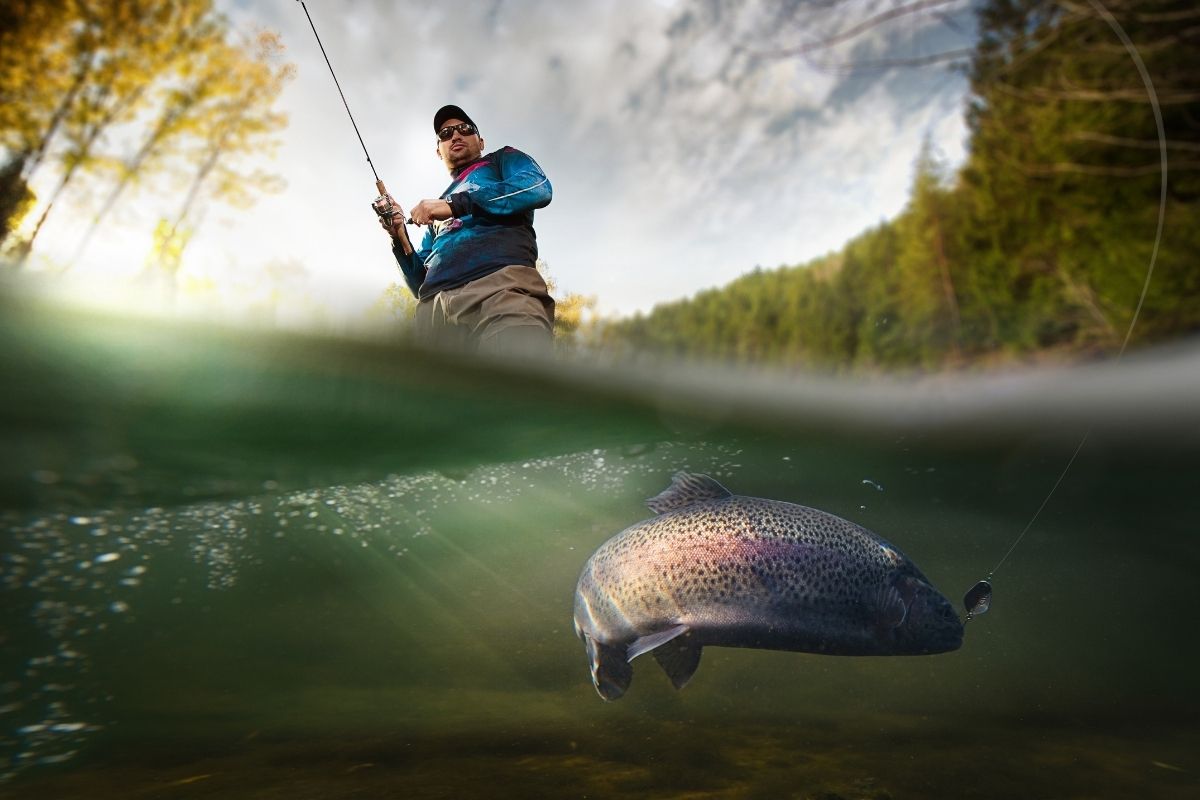
Most anglers are unable to spend entire days, weeks, or months on the water. Our time fishing is precious, and certainly limited.
What we really want to know is when the fish are naturally most active. If we knew that the fish were hitting in Oregon at 2:30 am, some of us would be there with our best rig, a headlamp, and a thermos of coffee.
Truthfully, the outcome can be different depending on where you are and what you're fishing for.
Those of us who enjoy smallmouth bass fishing know that the early and late bite can be fantastic. This is likely because the light penetration can have an adverse effect on fish like smallies that prefer cooler temperatures and the cover of the water column.
The opposite can be just as true. The hard hitting, hard fighting peacock bass in Florida is most catchable during the heat of the day when they're most comfortable chasing baitfish.
In the winter, when northern anglers flock to their favorite lake and drop bait through the ice for some hard water fishing, the best times can also be at midday when the fish simply become more active in the slightly warmer water temperatures.
Barometric Pressure
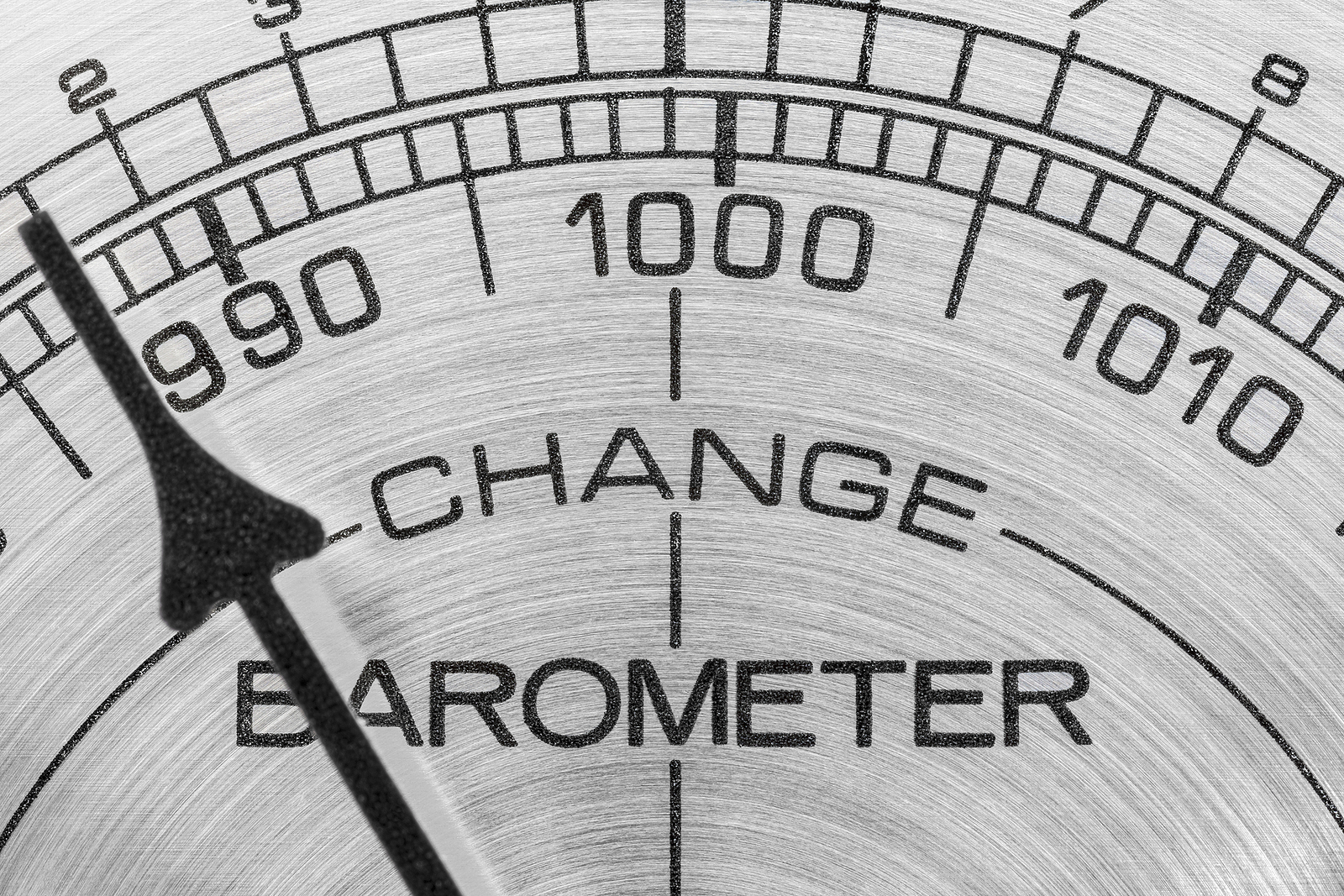
It's also worth it to take the barometric pressure into question. We know the odds of catching black bass are positively affected by a rising barometer (meaning there's fair weather ahead), but a falling barometer is lousy in terms of fishing success.
Having said that, during stormy periods, the fish aren't going to give up feeding, but they do become more tight-lipped. Trying finesse baits deep during a cold front can pay off.
For saltwater fishermen on either coast, one hour before and one hour after high tides or low tides can be the key. For inland fly fishermen, when the caddis fly, mayfly, or stonefly hatch is on, it can seem like there is no wrong time to go.
The old saying (as I remember it) goes something like this: When the wind is in the west, the fish bite best, when the wind is in the east, fish bite the least. I suppose there can be some truth to that. Sometimes when I go fishing, especially bass or pike fishing, a calm surface on the water is great for topwater offerings and the strikes are vicious. At other times, when the surface of the water is rippled or choppy, some of the best sub-surface fishing happens. All the same, I was once told not to put away the topwater lures just because of a bit of chop. You'll still get strikes, and I've found that to be mostly true.
Ultimately, fishing is said to be best during the time between the new moon and the full moon. According the Farmer's Almanac, the best fishing days in 2021, based on that logic, are:
Winter
- January: 13-18
- February: 11-27
- March: 13-28
Spring
- April: 11-26
- May: 11-26
- June: 10-24
Summer
- July: 9-23
- August: 8-22
- September: 6-20
Fall
- October: 6-20
- November: 4-19
- December: 4-18
The Almanac even provides a customized moon phase fishing calendar so you can further cross reference your data.
So When's the Best Time to Go Fishing?

When planning a fishing trip, anglers have used the solunar table and the moon phases to chart some good fishing possibilities, and it's proven to work.
But that doesn't mean we can tell you exactly what time to make your first cast, or the exact location a bite will occur. If you're going to regularly fish the same spot or water body, record your findings and success, then refer to it over time to try and get a jump on what the fish are doing that particular day.
Keep an eye on the weather (and especially the barometric pressure), have a good idea of the water temperature, and know when the moon period indicates good fishing. After that, it's up to you and your fishing rod.
Looking for a little more or even hot lunch for your hunting blind? Follow my webpage, or on Facebook and YouTube.
NEXT: THE TOP 10 STATES FOR BASS FISHING
WATCH
